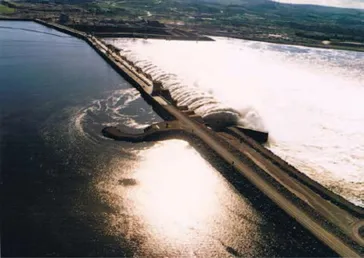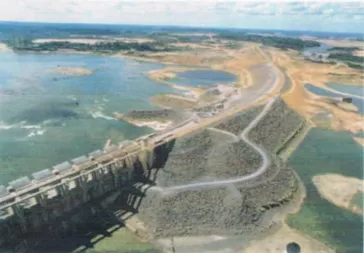
Spillway Design - Step by Step
Geraldo Magela Pereira
- 392 páginas
- English
- ePUB (apto para móviles)
- Disponible en iOS y Android
Spillway Design - Step by Step
Geraldo Magela Pereira
Información del libro
Most dam accidents with hydroelectric plants are due to under-dimensioning of the maximum floods of spillway design, causing extravasation and dam breaks (this occurs in 23% of the accidents). This work highlights the relationship between spillway design and potential dam failure and other important aspects of these structures and presents the methodology of design based on the international experience on the subject.
The book covers river basin studies and floods (the geology, geomorphology, hydrology, hydraulics, and layouts of the works). Further, spillway function, capacity and design flood, layouts, or arrangements, of hydroelectric works and types of spillways are treated in the book. Finally, the book discusses examples of dams that broke due to insufficient spillway capacity.
The book is intended for engineers and the companies that design dams and power plants around the world, as well as students in dam and hydraulic engineering. In short, people interested in producing electricity that is clean and potentially cheaper than other sources.
Preguntas frecuentes
Información
Chapter 1
Introduction
1.1 Initial considerations


- a site with good foundations conditions, preferably with sound rock, to withstand the hydrodynamic pressures that will be applied to the riverbed by the flow coming from the spillway; and
- a layout whose works adequately receives the approach flow, with flow lines without separations, discontinuities or detachments and with a well-distributed velocity profile to reduce the pressures that will be applied to the river downstream by the effluent flow of the spillway.






- Httotal head (m);
- H hydraulic head (m) ⇨ Q = c L H1, 5 (m3/s), as will be seen in Chapter 3;
- V1velocity in the approach channel (m/s);
- V velocity over the crest (m/s);
- P crest height (m), parameter that strongly influences the discharge coefficient (c);
- α1kinetic energy correction factor ≈ 1,0.